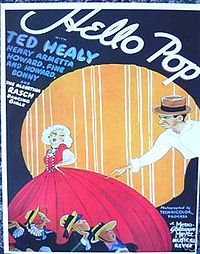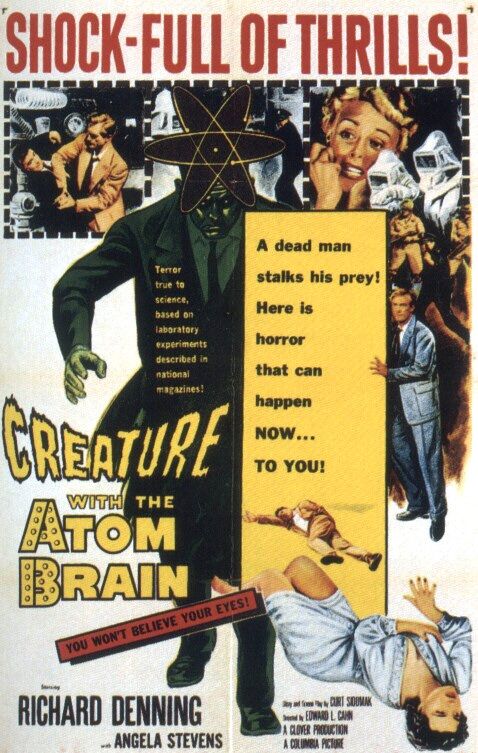Dinner and a Movie
Haute Cuisine From France to Greece
By Steve Herte
Not to sound like Andy Rooney, but have you ever wondered why the
day before you embark on a week of vacation is always the hardest day of your
life? Friday, my laptop gave me the blue screen of death and was out of action
all morning, forcing me to input the time sheets on another employee’s desktop
computer, all the while running back and forth to answer my phone. Adding a
little complication, my occasional dinner companion (whom I am now tutoring in
French - it should be interesting to get her out of her Spanish accent)
sent her time sheet from a Windows 7 enabled laptop to my Windows XP laptop and
I couldn’t open the file. Luckily I was able to call her. We were dining that
night anyway.
Then, also luckily, I ran into the computer services division
expert and she got my laptop working again, but not until after a half-hour
listening session (did I mention I’m the father-confessor to several
employees?). While I, of course, agreed with her, I also had other fish to fry,
and managed to finish all my work and all preparations made for a week out of
the office just in time to leave; only to discover there was a problem on the
subway line I needed to get to the movie theater.
As you can see below, I did make it and it was a wonderful evening
from then on. This week promises to be interesting with work in the garden and
around the house and pub-crawling and karaoke four nights in a row - my
kind of vacation. Tuesday, Wednesday and Friday are Irish Pubs and Thursday is
a Thai restaurant and Japanese karaoke (is there any other kind?). This morning
I learned that my next film (spoiler alert!) opens this week, Cloudy
With A Chance Of Meatballs 2. I’m loving it! Enjoy!
Haute
Cuisine (The Weinstein Company, 2013) – Director:
Christian Vincent. Writers: Etienne Comar & Christian Vincent (s/p),
Daniele Mazet-Delpeuch (story). Cast: Catherine Frot, Arthur Dupont, Jean
d’Ormesson, Hippolyte Giradot, Arly Jover, Jean-Marc Roulot, Brice Fournier,
& Philippe Uchan. Color, 95 minutes.
In an age where you need huge explosions, super heroes, gross
vulgarity or nearly naked people slobbering over each other in bed it’s
refreshing to see a well-acted movie requiring none of the above to tell its
story. Mazet-Delpeuch served as chef in the private kitchen of the Elysèe
Palace for President François Mitterrand from 1988 to 1990, and this film is a
fictionalization of her career and how she ended up as Mitterand’s personal chef.

The movie opens over stormy Southern seas and settles on the
barren, scrub-covered Crozet Islands halfway between Madagascar and Antarctica.
Here, at a research station, the only populated part, we find Hortense Laborie
(Frot) busily preparing dinner for dozens of hungry men while Mary (Jover), a
reporter from Australia, is desperately trying to interview her about her
previous career. Hortense successfully dodges Mary time and again and the scene
shifts to the Perigord region (the place for black truffles) of France, where
Hortense was born and lives on her farm raising geese. One day, a couple of
government men come to whisk her away, telling her only that a “major public
official” requires her services as chef. She is also told that noted chef, Joël
Robuchon recommended her for the position. When she learns that she will be
heading the private kitchen for Le President (d’Ormesson) she hesitates humbly
but is convinced to accept the post.
Nicolas Bauvois (Dupont) is assigned to be her sous-chef after her
whirlwind tour of the male dominated Main Kitchen where she is greeted by
glowers and leers, especially from Head Chef Pascal Lepiq (Fournier). After
learning that she will never know how many people will be having dinner until a
couple of days before; that the menu must be prepared ahead and approved; and
that she will receive nothing but resistance from Lepiq, she manages to take
stock of the kitchen stores and prepares a fabulous meal for the president and
his guests, including an amazing Chou Farci (stuffed cabbage) stuffed with
salmon. But what she wants most is to know what the president prefers her to
serve. In one of the most beautiful scenes she sits down with him while his
entourage nervously await him for a flight to some important state visitation.
She learns that he wants the sort of good, simple food his grandmother used to
make. When he hears that she also loves to read cookbooks just as he does, the
10-minute audience goes well over a half-hour – much to the chagrin of his
various nervous ministers.
This spurs her on to another major success at a “family” dinner
for the president where he regales her in the company of his guests. However
Lepiq lobbies to have her “dessert” removed from the menu, replacing it with
his own. No matter how much she protests that her “dessert” is a cheese course
(and a home-made one at that, that Nicolas slaved to perfect) she is overruled.
After this, things begin to go downhill. The treasurer insists that her
expenses are too high – such as train fare to Cherbourg for special mushrooms
called “Ceps” (Porcino in Italian). Then to add insult to injury the ministry
places the president on a diet, forbidding fatty meats and sauces. There is
another beautiful scene later that evening when the president comes down to the
kitchen and she prepares him a snack consisting of a thick slice of bread
coated liberally with black truffle sauce and covered with generous slices of
black truffles. (I was wishing I could jump into that scene).
Sadly, the constraints and pressures levied on her force to resign
and head back to the Crozet Islands, where she is not only more appreciated but
almost worshipped. Meanwhile, the boorish lechers in the Main Kitchen rejoice
at their success in ousting her.
Haute Cuisine (original title Les Saveurs du Palais –
“Tastes of the Palace”) is never boring, even though the amazing recipes
supplied by Mazet-Delpeuch herself constitute much of the scenery.
The focus of the plot, however, is the trials and tribulations of
a woman dealing with a chauvinistically pig-headed crowd of men while
performing her duties superbly and with dignity. My sincere applause goes to Frot
and d’Ormesson for their fantastic characterizations and flawless acting. This
movie was a delicious work of art and deserves to be playing in more than just
two theaters in Manhattan. The subtitles are quite an accurate translation of
the surprisingly clear French spoken on-screen. The music beautifully wraps the
story in velvet folds. And . . . what Bruce Willis movie comes with a reference
to her cookbook, Carnets de cuisine du Perigord a l’Elysee, at the
end? Rating: 5 out of 5 Martini glasses.
Boukiés
29 East Second Street (2nd Avenue), New York
At the corner of 2nd and 2nd just
north of Houston Street, it’s impossible to miss the big, bright white lit
letters on a dark blue background of Boukiés Greek restaurant (μπουκιες in
Greek and pronounced Boo-Kay-ess in English, which translates to “small
bites”). This year-and-a-half-old eatery specializes in the small dishes (Meze)
of Aegean cooking. The entrance is on the Second Street side and the décor is
simple, featuring the blues and whites of the Greek flag. The dining area has
comfortable beige banquettes and chairs and is separated from the kitchen in
back by a wall-sized wine rack. The two sides facing the street are floor to
ceiling windows and the avenue side can be opened to the sidewalk café.

The manager greeted me at the door and led me to a table by the
window from where I could watch the people both outside and inside – perfect.
My waiter, Arthur soon appeared and brought my water and both the food menu and
wine/beer menu. I noticed they had my favorite beer (Weihenstefan, a
delicious wheat beer from the oldest brewery in Germany) and I ordered it to
give me time to choose my meal. Arthur was very helpful in explaining mezes,
suggesting three plus a main course. Fine by me. I learned that the consulting
chef, Diane Kochilas, author of The Glorious Foods of Greece,
described these dishes as “not to sate but to tease.” After an appropriate time
I chose two of his selections and two of my own. Meanwhile, the bread dish
arrived, accompanied by a beautiful chickpea/garlic/olive oil spread.

I started with a lovely Taramasalata – made with smoked trout and
topped with capers – a lovely, smooth combination of bread crumbs, caviar,
onion, olive oil and lemon juice mixed with the pureed trout and formed into a
disk on the plate. I spooned it onto pita bread and found it delightful. My
second meze arrived shortly after the first, but it did present a problem, for the first dish was cold and the second hot. I simply
switched to the hot one, Psito Ktapodaki, a Boukiés specialty of marinated,
grilled octopus served with a lemon-caper dressing. Here my apologies go to
those who find octopus repulsive; but being that it was on the menu in three
different preparations and on the business card itself,
I felt they knew what they were doing. They did indeed. It was tender, juicy
and flavorful with a nice smoky crispness. I just find it fun to eat octopus.
It was time to order the wine and the list was quite impressive
considering they were almost all Greek wines. I chose 2005 Mercouri Antares
(Avgoustiatis/Mourvedre), a medium-bodied red varietal with a slight tart edge
to the deep fruity flavor that even complimented the lemon flavors in the food.
These small plates were starting to fill me up when the third one arrived. The
Thrimatismeno Arni se Pita – lamb, slow braised with red wine until it
collapses (“is pulled”), then stuffed into pita bread and served with a thick
yoghurt-Dill sauce – was amazing. The sauce by itself was wonderful. The two
together were earthy and erotic. I had to be careful. The main course was still
to come. I paced myself.

All through this the wine was humming, the music playing and the
traffic on Second Avenue made me supremely happy I don’t drive. Then came the
Peskandritsa a la Polita – Monkfish tails sautéed with white wine, saffron and
herbs served with braised fennel, peas, carrot logs, fingerling potato halves
in a potato/Dill broth. The dish arrived stacked like a Jenga game and there
was no way to eat it without deconstructing it. But when rearranged in the bowl
it was only a matter of time before the soft, juicy fish (poor-man’s lobster,
but better by far), the crispy but tender carrots and the peas were gone. Only
the potatoes were left, and I wanted dessert.

Even though Arthur directed me to some chocolate confection, I saw
my favorite Greek dessert, Galaktoboureko (literally “milk custard”) and order
it. In 250 previous Greek restaurants I have never seen this dish prepared this
way. It looked like an amalgam of a Cannoli and a Spring Roll and not the
familiar delicate layers of philo dough and custard with a honey drizzling. I
had to comment on it. It was good, but not Galaktoboureko. I asked Arthur if
they served Greek coffee and tried not to go into horror when he said no. I
settled for a double espresso (which was quite good) and a glass of Samos wine
(on-the-house).
Boukiés is a wonderful addition to the East Village and deserves
several return visits to try their whole fish specialties, the Saganaki (one of
my favorites) and the many other mezes. The immediate area of
Manhattan has several interesting restaurants but I chose this one for comfort
food and comfortable sitting. The moderate to low prices also add a significant
lure.
For the Dinner and a Movie archive, click here.












